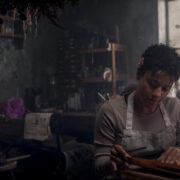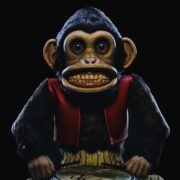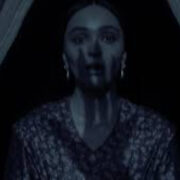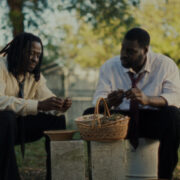How The Token LGBTQ High School Character Has Evolved
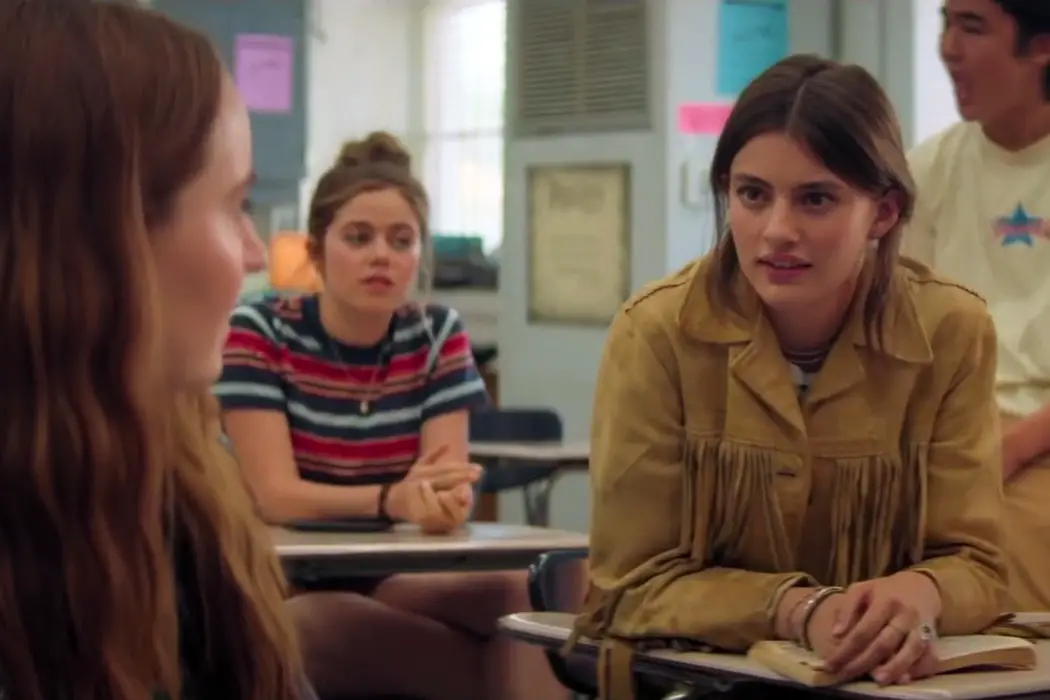
Carson Mlnarik is an entertainment journalist and social media coordinator…
The lights are dim and there’s a lit cigarette on the edge of the sink. The perfect slow jam begins to play as two bodies move in. It’s your quintessential coming-of-age sex scene, except the young heroine we’ve followed for the last hour and a half isn’t kissing some heartthrob with Justin Bieber bangs; she’s kissing another girl. It’s an intimate moment that plays out between Amy (Kaitlyn Dever) and Maggie (Diana Silvers) in Olivia Wilde’s Booksmart, and it rings quietly revolutionary.
The matter-of-fact portrayal of a homosexual relationship and the idea that a character’s sexuality is a mere attribute of their entire existence, not their sole purpose, are markers of the emergence of a much more nuanced gay high school experience in film. While teen flicks were LGBTQ inclusive long before marriage in the United States was, even some of the genre’s most iconic queer characters are built upon stereotypes. It has taken time, but the concept of a gay high schooler in the media has transformed from totally tokenized to self-realized.
The Dark Ages
During the 1980’s and 90’s, the AIDs crisis in the United States was showing society a different side of the LGBTQ community, and teen films were a genre where the community could find on-screen representation, even if it was minor.
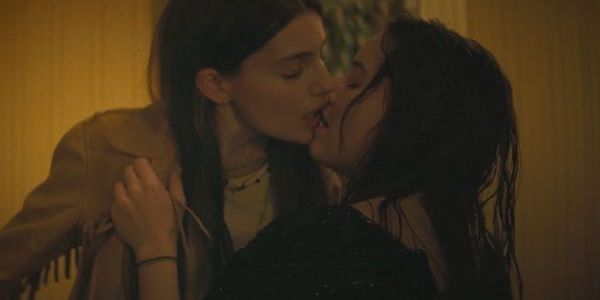
In 1988’s Heathers, gay teen romance was more so the butt of a joke than a plot point in the cult classic. The dark comedy follows the takedown of the popular clique and a rocky high school romance between Veronica Sawyer (Winona Ryder) and J.D. (Christian Slater) as they fall in love and kill their more problematic classmates. Kurt (Lance Fenton) and Ram (Patrick Labyorteaux) are two asinine jocks who find themselves on the couple’s bad side after spreading a rumor. Veronica and J.D. murder the boys, and as a means of humiliating them, J.D. plants evidence including a gay pornographic magazine and a suicide pact, painting Ram and Kurt as lovers. The community buys into it, but eulogizes the dead boys as martyrs rather than shunning them.
“I love my dead gay son,” one of the boy’s fathers shouts in a particularly campy moment. The plan backfired, and what Veronica and J.D. thought would be a homophobic explosion, ends up bringing the allyship out in their community. It’s not a negative portrayal, per se, but the intent behind the framing of the jocks as lovers seems to suggest being gay is taboo. It reads as satirical now and has found an even more absurd life in an off-Broadway musical but its assumption of what it means to be gay in high school is bleak and stereotypical to say the least – no matter how hilariously dated references like a Joan Crawford postcard and mineral water seem today.
Fast forward a few years to Amy Heckerling’s Clueless, a loose adaptation of Emma that paints a much different picture of gay high school. The elusive Christian (Justin Walker) is an attractive new student at valley girl Cher’s (Alicia Silverstone) high school who woos her by picking up her pen to the tune of dramatic swelling music. Who could forget the cinematic power of classic ’90s slang like, “Nice stems“? As a character, Christian is depicted as well-dressed, well-liked, and a man of good taste, so Cher has no idea why he’s so sexually unresponsive until he’s outed by another classmate.
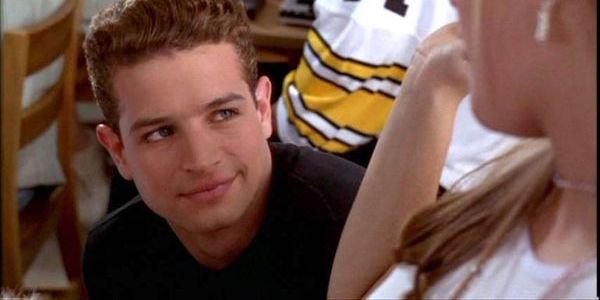
As a gay teenager in the eyes of his peers, Christian is described as a “disco-dancin’, Oscar Wilde readin’, Streisand ticket holdin’ friend of Dorothy,” and while Cher keeps him around because of his penchant for fashion and art – 1995 Ally of the Year, anyone? – he serves little purpose to the plot besides a stumbling block for a hopelessly romantic female protagonist. Cher’s gym teacher, Ms. Stoeger, is another walking stereotype described as a “butch lesbian” who hates men. She only sympathizes with Cher after she blames men for her problems. The inclusion of two LGBTQ characters definitely meant the community was being represented in the genre, however demonstrated that Hollywood still had a ways to go before depicting gay characters as authentically complex.
The Golden Age of GBFs
A bigger community focus on coming out, providing support, and suicide prevention rolled in through the 2000s, starting with the founding of The Trevor Project in 1998. Teen film responded by giving us gay, but usually for comedic effect or with a twist. The GBF – or gay best friend – stock character seemed to find its form, but there was more tolerance than acceptance, with LGBTQ characters typically relegated to the outcasted groups.
Perhaps no one has embodied the role of gay best friend quite as well as Daniel Franzese as Damian in Mark Waters’ Mean Girls. Damian is stereotypical, but thanks to Tina Fey’s tongue-in-cheek script, plays his stereotype for comedy with an arc that allows him to make genuine points without just being a stock character. Damian is an art geek who is best friends with alt-chick Janice Ian (Lizzy Caplan), and the two befriend new student Cady Heron (Lindsay Lohan) who moves to the suburbs from Africa. When Cady is recruited by The Plastics, the high school’s resident A-list clique, Janice and Damian use it as an opportunity to wreck havoc on the clique that made their teenage years miserable.
Throughout the film, Damian’s sexuality and stereotypical interests are poked fun at. Janice regularly calls him “too gay to function,” and in a particularly socially woke moment, Cady wonders if it’s “only okay when Janice says that,” after repeating the joke to The Plastics. Damian is othered by his fellow students as the only gay kid in high school when someone throws a shoe at him during an especially flamboyant performance of Christina Aguilera’s “Beautiful.”
A critique is that none of the other students seem bothered by the fact that Damian’s bullied because he’s gay. This echoes another subplot of the film: Janice’s vendetta against queen-bee mean-girl Regina George (Rachel McAdams) is that Regina started a rumor that Janice was a lesbian. To the script’s credit, the characters seem to take their otherness in stride, dishing out disses when they have to. When a girl yells at Damian to get out of the girl’s bathroom, he scares her away with a sassy comparison to Danny DeVito, quipping, “I love your work.” Janice addresses Regina’s rumor head-on in a particularly iconic scene, admitting to sabotaging Regina’s life in front of the entire school because Janice “has a big lesbian crush” on her, causing fellow classmates to loudly cheer.
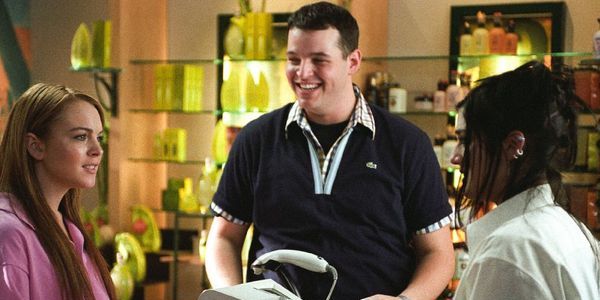
Because girl-on-girl bullying and high school as a larger ecosystem are the film’s main focus, it’s understandable that its LGBTQ characters are not as developed as they could be. At the end, however, Damian’s love life is nonexistent and Janice ends up with a boyfriend, though she doesn’t make a huge deal about labelling her sexuality. The film’s concluding note of “treat others the way you’d like to be treated,” ultimately extends to its LGBTQ characters, though.
Gay bullying in high school is a large part of an LGBTQ character’s existence in Easy A. Brandon (Dan Byrd) is bullied because students think he is gay, and Olive (Emma Stone) pretends to hook up with him at a party to stop the rumors. The moment is the inciting incident for the rest of the film, as Olive makes a business out of pretending to sleep with boys for various reasons. Brandon’s inclusion by screenwriter Bert V. Royal allows that it’s not easy for gay students to be out in high school but makes progress in its suggestion that it gets better. In a particularly comical turn of events, Brandon pulls a Huckleberry Finn and skips town with “a hulking black guy,” who he is later shown to be happily in love with.
The Perks of Being a Wallflower depicts high school for LGBTQ characters in a similar manner as both Easy A and Mean Girls, showing that while it is a place of intense connection and friendship, it’s also a bullying hellhole serving as a stepping stone to better things – and better people – after graduation.
Perks, directed by Stephen Chbosky,who also wrote the novel it’s adapted from, follows Charlie (Logan Lerman), a shy freshman finding his place in high school. He quickly befriends an enigmatic gay senior named Patrick (Ezra Miller) and his stepsister Sam (Emma Watson), who welcome him into their group after realizing he doesn’t have any other friends.
Miller, who identifies as queer in real life, pays careful attention to Patrick’s mannerisms and dialogue, never letting him fully drift into stereotype territory. Patrick’s sexuality, while occasionally mocked at school, is fully accepted in other areas. His character takes on drag in the role of Dr. Frank-N-Furter in midnight showings of Rocky Horror Picture Show, where an accepting community is shown and he’s supported.
What’s more is that Patrick isn’t just the gay comic relief, he’s got his own romantic interest too. His secret relationship with popular quarterback Brad (Johnny Simmons) reveals the struggle of gay relationships at that age, but continues the teen film narrative of the time that high school is not an accepting place. Patrick is presumably the only “out” student at high school, and as popular and closeted, Brad’s reputation can’t risk being seen with him. They have a loving relationship until Brad’s dad finds out and gets physically abusive. After the fact, Brad bullies Patrick and the two get into a physical altercation that Charlie stops. Brad tearfully tells Charlie, “Thanks for stopping me,” seeming to nod at the internalized homophobia that a lot of bullying gay teens face at that age.
Considering the story takes place in 1992, it’s probably not a far cry from how it was for students at the time, though Patrick continues to be himself despite attacks on his identity. His portrayal contributes towards a narrative in the genre that it does get better for gay people, and that they’re not just funny but complex and capable of real romance.
And Then There Was the Era of Acceptance
Gay rights in the United States celebrated a milestone in 2015 when the Supreme Court held that states had to recognize and grant same-sex marriages. Fittingly, greater societal LGBTQ acceptance and diversity has begun to infiltrate the media, namely in 20th Century Fox’s Love, Simon, the first film by a major Hollywood studio centering on a gay teen romance.
Simon Spier (Nick Robinson) is not just the token gay character in the teen flick, he’s the star. The movie tells the story of his coming out experience, as he falls in love with a gay classmate via anonymous Tumblr posts and emails, and another classmate uses the secret to blackmail him. As the lies get bigger, Simon has to face everyone and come to terms with his identity. Director Greg Berlanti identifies as gay and purposefully created a teen film that doesn’t really adhere to any of the stereotypes that came before it, and when it does, confronts them with comedy. In fact, one scene finds Simon dreaming of what being out in college would be like a la a rainbow-colored dance sequence to Whitney Houston‘s “I Want to Dance With Somebody.” At one point, he stops in his tracks and Robinson blurts to the camera, “Okay, maybe not that gay.”
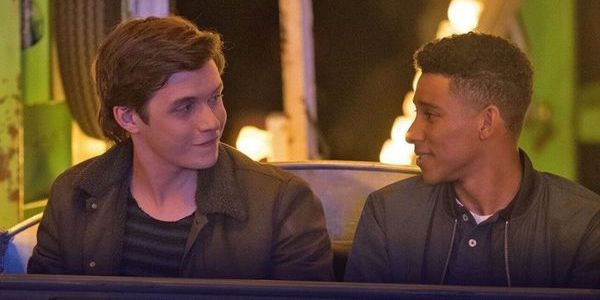
As a new type of gay teen portrayal, Simon is nuanced and non-stereotypical. He doesn’t exist for comic relief, he is capable of romance, and his orientation isn’t his defining factor before or after coming out. His relationship with his anon suitor (Keiynan Lonsdale) is largely explored through messages sent and received, and Berlanti depicts this on-screen with tableaus of characters that Simon suspects, reading the anonymous messages in their voices. By suggesting to the viewer that the secret crush could be the Waffle House waiter just as much as the kid from theater club, the scene itself continues to expand the lexicon of what a gay teenager looks like for the viewer.
The film also speaks to the bullying that gay characters encountered in the preceding teen films. After he’s outed, Simon and Ethan (Clark Moore), the school’s other resident gay kid, are bullied but it’s quickly checked by a teacher and the bullies are rightfully made out to be cowards. Moore’s Ethan offers another interpretation of a gay teen, expressing himself as especially feminine in contrast to Simon, further allowing that there’s more than one way to be gay.
Finally, Olivia Wilde and screenwriters Katie Silberman, Susanna Fogel, Emily Halpern, and Sarah Haskins pass the torch in this year’s Booksmart. Dever‘s Amy doesn’t even broach the topic of her queerness till nearly 10 minutes in, when she casually notices her female crush at lunch. Still, it’s her best friend Molly (Beanie Feldstein) that encourages her to strike up a conversation. It’s no big deal that she’s gay, kids at school are accepting, and she’s not the only gay student there.
From being a mere dark joke to being a mere character choice, homosexuality in teen films has completely transformed. As society has embraced gay rights in a multitude of ways, Hollywood has expanded on its representation both behind and in-front of the camera, and gay teens in the movies have gone from solely stock to self-actualized. The token gay high school character isn’t as token as they were before – they’re just like everybody else.
How do you think the quintessential LGBTQ character has changed in teen film? Do you have a favorite gay teen portrayal or film? Let us know in the comments.
Does content like this matter to you?
Become a Member and support film journalism. Unlock access to all of Film Inquiry`s great articles. Join a community of like-minded readers who are passionate about cinema - get access to our private members Network, give back to independent filmmakers, and more.
Carson Mlnarik is an entertainment journalist and social media coordinator in New York City. He loves movies, Taylor Swift, and iced coffee. For more musings, follow him at twitter.com/carsonmlnarik.


